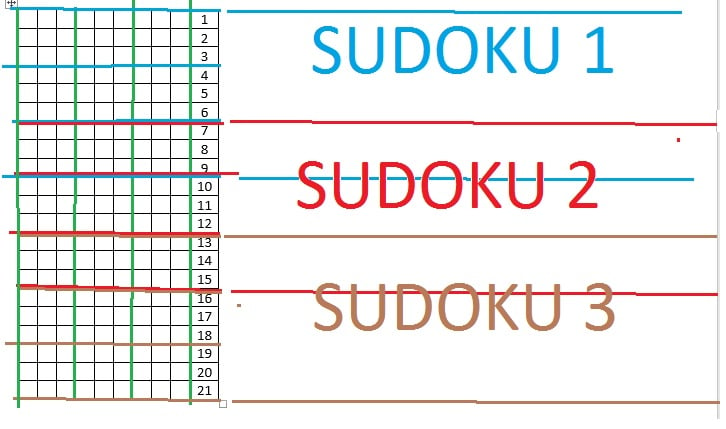Hi all,
I have to solve a tripple sudoku.
The program is supposed to solve the enlarged sudoku. We load 21 rows, each with 9 integers in the range <0.9>. Rows 1-9 (numbered so that the first line is numbered 1, etc.), 7-15 and 13-21 are to create a classic sudoku. We remind you of the classic sudoku rules:
- The classic sudoku has a size of 9x9,
- Each row of numbers can not repeat itself,
- In each column the numbers can not be repeated,
- In each of the nine squares 3x3 numbers can not repeat.
We fill the Sudoku in numbers from 1 to 9. We can only interfere with sudoku cells that initially contained zero. Cell contents that were not initially zero can not be changed. If it is not possible to solve the sudoku display:
NO
If possible, we display a solution in a format like input.
I have a couple questions:
- How can computer solve the sudoku?
- Which algorithm to use?
- How to design it?
- When to change 0 to a number (What is the condition that enable us to write a number in the place of 0?)
